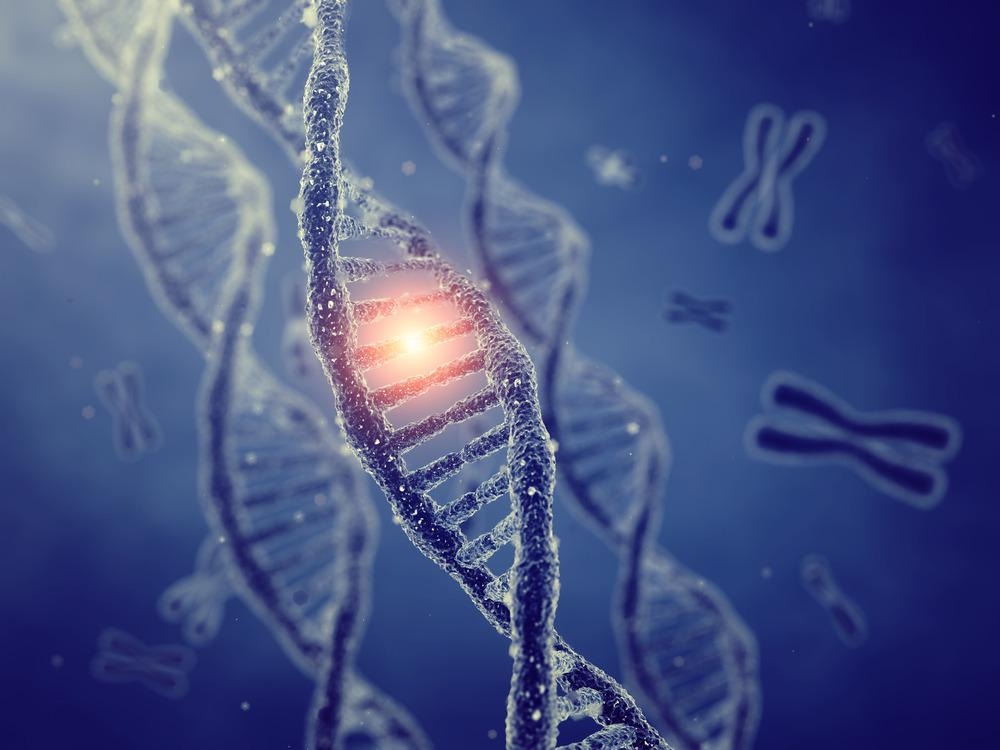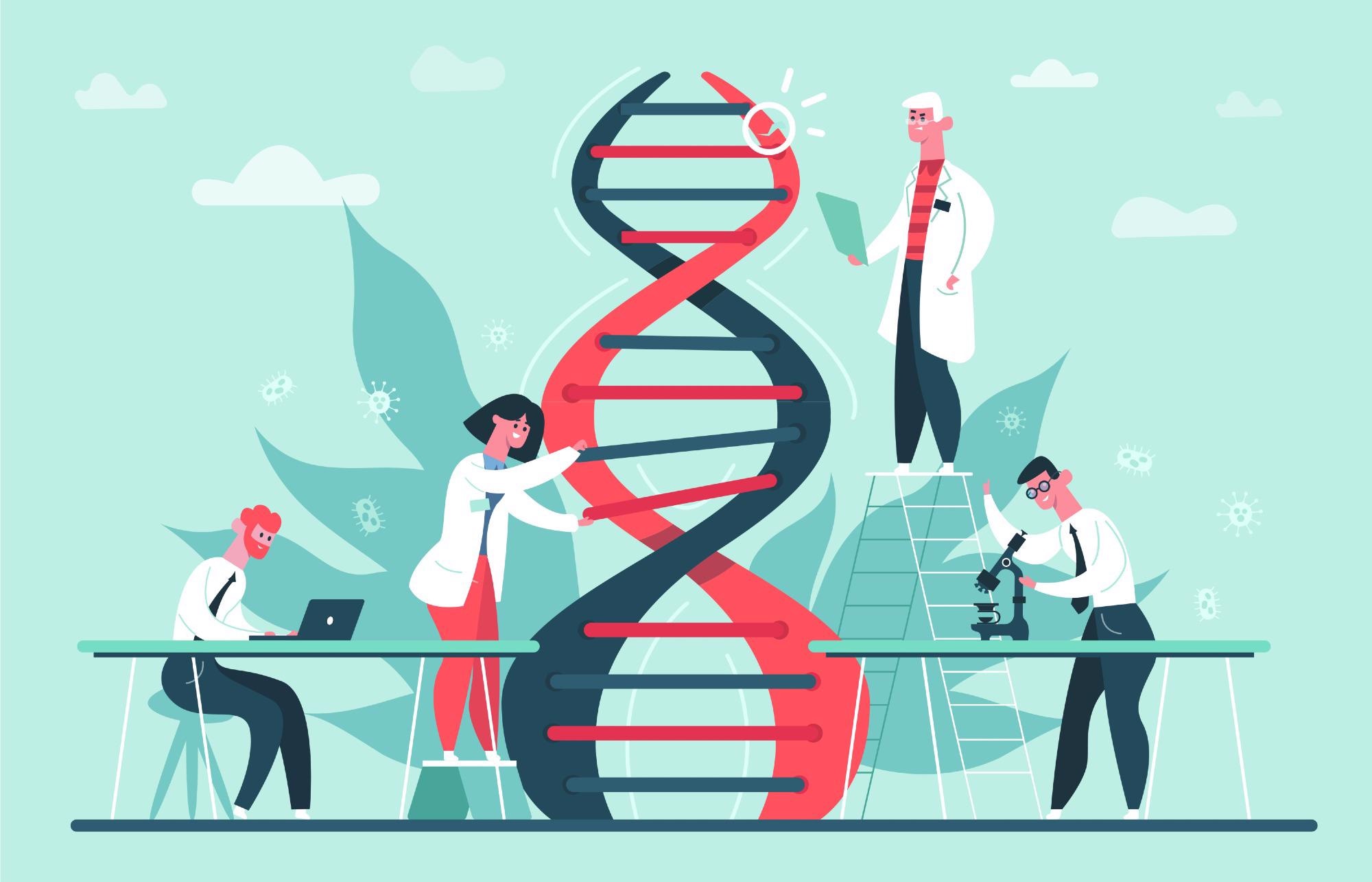Referring to either the alleles of a gene or the complete set of genes, a genotype describes the unique DNA sequence an organism carries. Variation or mutation in this genetic composition can elicit an observable change. The classical genotype-phenotype interpretation suggests a direct link between changes at these two levels.

Image Credit: nobeastsofierce/Shutterstock.com
The observable physical properties of an organism are largely influenced by genetics. Determining genetic patterns associated with various traits, or phenotypes, allows for predictions of health and disease to be made.
Identifying the gene responsible
As early as the 19th century, genotype-phenotype mapping has been used to relate the genetic material of an individual to its physical attributes. Linking these two distinct levels of biological abstraction has been a challenge for researchers ever since. But, by the early 1920s constructs of the fruit fly genome were being developed; with over 50 genes mapped on 4 chromosomes.
In classical genetics, random mutagenesis has been fundamental to defining the function of many genes. By genetically disrupting cellular processes, researchers can identify changes in visual characteristics, compared to functional wild-types. This classical method of genotyping is often referred to as forward genetics.
Determining the role of a gene
Modern methods of genotyping allow for rapid and cheap genome-wide screening. High-throughput technologies enable high-speed and large-scale screening of genomes, identifying markers with biochemical phenotypes across disease cohorts and populations). Termed reverse genetics, this technique can aid in identifying regions or sequences of DNA associated with certain phenotypes by markers as small as single nucleotide polymorphisms (SNPs).
The genome-wide association studies (GWAS) catalog, founded in 2008, documents SNPs significantly (p-value ≤ 5.0 × 10-8) associated with phenotypes. This database currently houses over 65,000 published SNP-trait associations and describes alleles affecting biological processes, disease aetiologies, response to drugs, and many other traits. This can provide a basis for precision medicines and tailored treatments, as well as potentially improve diagnoses.
Identifying markers of disease
Identifying markers, such as SNPs, through next-generation sequencing and array-based technologies allows for mutations and variations to be associated with phenotypes in large parallel sampling. Microarrays are a popular and developing technology that utilizes complementary base pairing to identify the presence of known disease-associated alleles.
What's more, preparing cDNA from an individuals’ mRNA can allow microarrays to measure the expression level of genes. This provides a more detailed picture of the disease environment. For those with cancers, microarrays can indicate tumourigenic expression patterns. cDNA from tumor cells and normal cells tagged with different fluorescent colors, hybridize on microarrays and enable quantification of the different genotype expressions.
As genotyping becomes more accessible, the ability of these technologies to identify disease-associated alleles will improve. However, as of 2019, reportedly 80% of GWAS were carried out on individuals with European ancestry. This lack of diversity causes a strong European bias, limiting the potential of genetic data to accurately predict phenotypes.

Image Credit: WinWin artlab/Shutterstock.com
Limitations due to Eurocentric genetic catalogs
Genotype-phenotype maps and disease-causing variants show immense diversity across different populations. Specific mutations with greater prevalence in certain groups can complicate diagnosis. Allelic information for individuals of African descent is not as readily available as for their Caucasian counterparts, so the ability to associate genotype to phenotype is limited.
Heart failure due to transthyretin cardiac amyloidosis, resultant from V122I mutations, is more commonly seen in Black Americans than Caucasians. This differential disease etiology is often under-diagnosed, despite accounting for 10% of severe heart failure in Black Americans. Identifying this mutation can inform therapies, as well as support people of African descent in receiving appropriate care and personalized medicines.
Ethnic diversity in reference genomes is vital to capture the spectrum of alleles associated with different phenotypes. Differences in genetic backgrounds, as well as gene-environment interactions, influence the prevalence of risk variants in different populations. These differences can affect disease pathogenesis, as well as the efficacy and dose requirements of drugs.
Individual polygenic risk profiles
Identifying genetic risk factors associated with disease by computational algorithms can allow for the stratification of therapeutic groups. Integrated models combining polygenic risk scores with non-genetic risk factors and demographics, provide population-adjusted prediction models of disease. These quantitative risk estimates, inform tailored treatment plans and diagnoses.
Further Reading
Last Updated: Apr 13, 2022